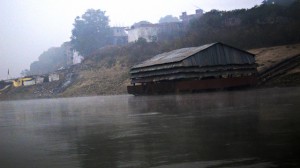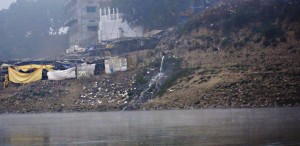 A version of this post first appeared at National Geographic, and references my piece, Grunge on the Ganges, at The New York Times’ Latitude blog.
A version of this post first appeared at National Geographic, and references my piece, Grunge on the Ganges, at The New York Times’ Latitude blog.
Varanasi, India — A couple years ago, one of India’s leading industrial houses announced a revolutionary new household filter that would for the first time bring affordable, safe drinking water to millions of homes. The Tata Swach combines the inexpensive carbon of burnt rice husks with silver nano-particles to kill and remove deadly microbes including cholera, E coli, and the rotavirus.
The Swach doesn’t need electricity or running water. Unlike some filters sold in the United States, the Swatch’s filter bulb cuts off the flow of water when it’s exhausted, meaning it’s impossible to drink unclean water that’s passed through a spent filter. (There’s no risk in drinking unfiltered water in New York or Denver, but it’s a different story in India, where waterborne diseases kill as many as half a million children each year.)
And it’s hugely affordable: The unit costs less than $20 and monthly filter replacements are just $7.
More than a million of these filters have been sold since 2009, and it’s not hard to imagine the public health benefits that will follow. More Indian companies are jumping into the low-cost filter business, which could push prices even lower.
This Indian success story, however, can also be seen as a thin bit of cover for the country’s scandalously poor public services.
In the West, there is often a suspicion of municipal water. In my hometown, families spend good money to filter water that’s rigorously tested each day. Even worse, they pay for bottled water that often comes from the same city mains as the local tap water.
Indians need to filter and boil their water because the stuff their government sends them is often poisonous. This was driven home last month when, during a seven-day boat journey down the Ganges, I came across a jaw-dropping sight: A sewage pipe pouring waste into the river just upstream of a water pumping station that in turn sent the dirty water right back into people’s homes.
With no one else looking out for their health, individual households take on the burden and financial cost of what is clearly one of the basic jobs of government.
William Nanda Bissell, in his 2010 book “Making India Work,” describes the economic activity generated by these gaps in governance as “forced consumption.” The money Tata and other companies earn from innovations like the Swach is money that Indian families could have saved or spent on education, housing, health care or, God forbid, culture and entertainment. The massive investment required to deliver clean water to Indian households is still less than the total amount being spent by hundreds of millions of families to do the job at home –- and of the work and school hours and health expenses lost to waterborne diseases.
According to a new report by the Delhi-based Center for Science and the Environment, India’s cities are drowning in their own waste due to poor planning and administration. “Every city was the same old story,” Souparno Banerjee, lead researcher on the 3 ½ year effort, told the Wall Street Journal. “It had devastated its surface water, it was depleting its ground water and it had no plan for managing its water or wastewater.”
Speaking with the Journal, the Center’s director, Sunita Narain, asks some disturbing questions:
“Is it a reflection of the caste system of Indian society, where removing waste was someone else’s business? The business was untouchable. Certainly it was unspeakable. Or is it a reflection of the current governance systems, where water and waste are government business and, within that, it is the sole business of a lowly water and sanitation bureaucracy?”
“Or is it simply a reflection of Indian society’s extreme arrogance — our belief we can fix it all as and when we get rich?”
Dan Morrison is a journalist and author of The Black Nile.
